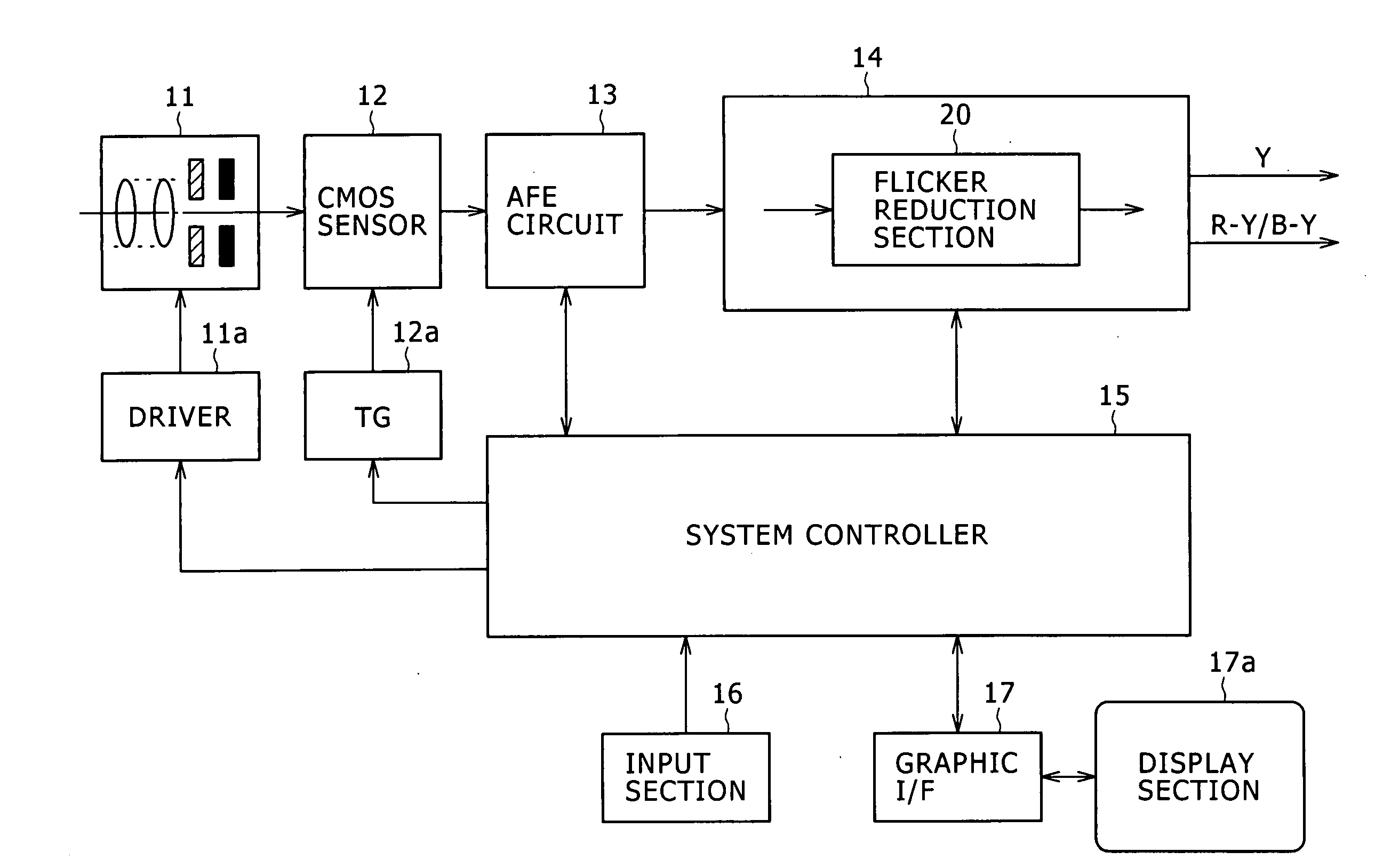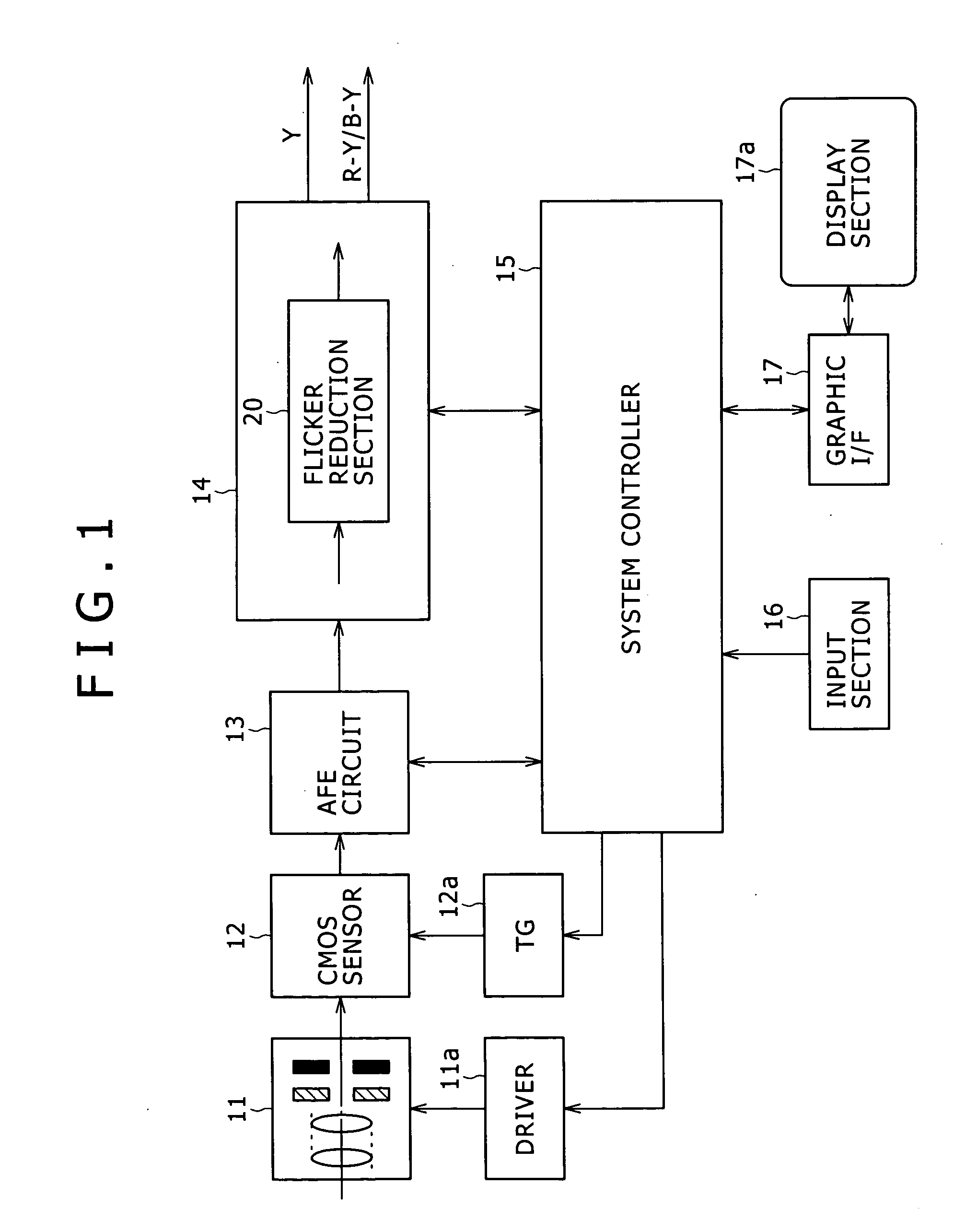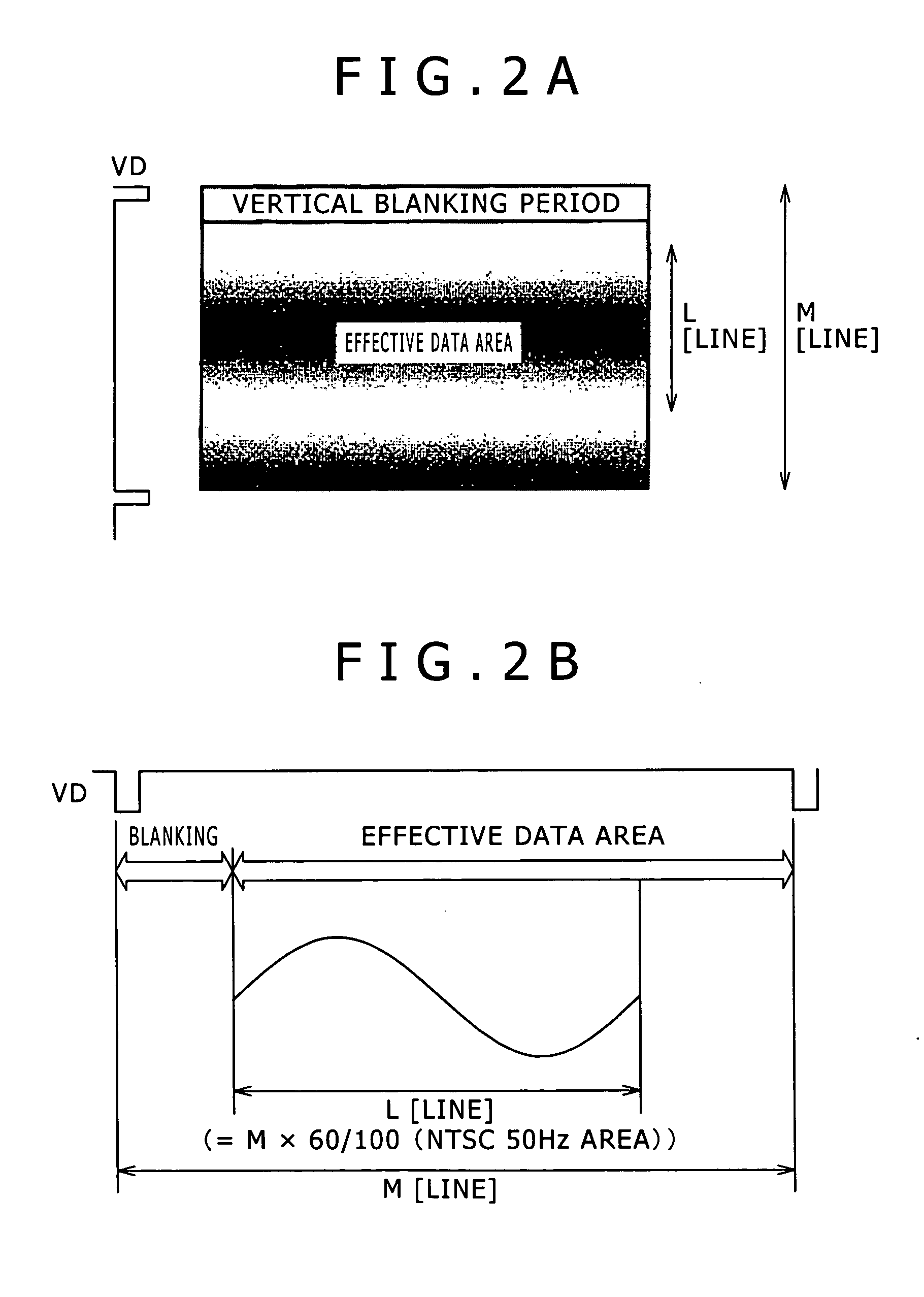Image-processing apparatus and image-pickup apparatus
a technology of image processing and pick-up apparatus, which is applied in the direction of color signal processing circuits, color television details, television systems, etc., can solve the problems of inability to accurately sample period equivalents. , to achieve the effect of eliminating flickers, high reliability, and enhanced performan
- Summary
- Abstract
- Description
- Claims
- Application Information
AI Technical Summary
Benefits of technology
Problems solved by technology
Method used
Image
Examples
first embodiment
[0054]FIG. 1 is a block diagram showing a configuration including components composing an image-pickup apparatus according to the first embodiment of the present invention.
[0055] The image-pickup apparatus shown in FIG. 1 has an optical block 11, a driver 11a, a CMOS image sensor 12, a time generator (TG) 12a, an analog front end (AFE) circuit 13, a camera processing circuit 14, a system controller 15, an input section 16, a graphic interface (I / F) 17 and a display section 17a. In the following description, the CMOS image sensor 12 is referred to simply as a CMOS sensor.
[0056] The optical block 11 includes a lens, a lens driving mechanism, a shutter mechanism and an iris mechanism. The lens has a function to focus light coming from an object of photographing on the CMOS sensor 12. The lens driving mechanism is a mechanism for moving the lens in order to adjust the focus and carry out a zooming process. The driver 11a controls operations to drive the mechanisms in the optical block...
second embodiment
[0149]FIG. 15 is a block diagram showing a typical internal configuration of a flicker reduction section 20a according to a second embodiment of the present invention. It is to be noted that, in the typical configuration shown in FIG. 15, components identical with their counterparts of the configuration shown in FIG. 3 are denoted by the same reference numerals as the counterparts and description of the components is not given.
[0150] In the second embodiment shown in FIG. 15, much like the first embodiment described earlier, instead of carrying out an interpolation process to produce pieces of data at L1 points accurately corresponding to a period with a length equal to a period (or a plurality of periods) of the flicker wavelength from integration values generated by the line integrator 210, an interpolation process is carried out. Then, the process generates pieces of sampling data accurately corresponding to a period with a length equal to a period (or a plurality of periods) of...
third embodiment
[0157]FIG. 16 is a block diagram showing a typical internal configuration of a flicker reduction section 20b according to a third embodiment of the present invention. It is to be noted that, in the typical configuration shown in FIG. 16, components identical with their counterparts of the configuration shown in FIG. 15 are denoted by the same reference numerals as the counterparts and description of the components is not given.
[0158] The flicker reduction section 20b shown in FIG. 16 is different from the internal configuration of the flicker reduction section 20a shown in FIG. 15 in that, in the case of the flicker reduction section 20b, an inferred-component interpolation section 160 is provided between the flicker generation section 130 and the processing section 140 as a substitute for the flicker-component interpolation section 150. In the configuration of the flicker reduction section 20b, flicker components (or, strictly speaking, the flicker coefficient Γn (y)) inferred in ...
PUM
 Login to View More
Login to View More Abstract
Description
Claims
Application Information
 Login to View More
Login to View More - R&D
- Intellectual Property
- Life Sciences
- Materials
- Tech Scout
- Unparalleled Data Quality
- Higher Quality Content
- 60% Fewer Hallucinations
Browse by: Latest US Patents, China's latest patents, Technical Efficacy Thesaurus, Application Domain, Technology Topic, Popular Technical Reports.
© 2025 PatSnap. All rights reserved.Legal|Privacy policy|Modern Slavery Act Transparency Statement|Sitemap|About US| Contact US: help@patsnap.com



